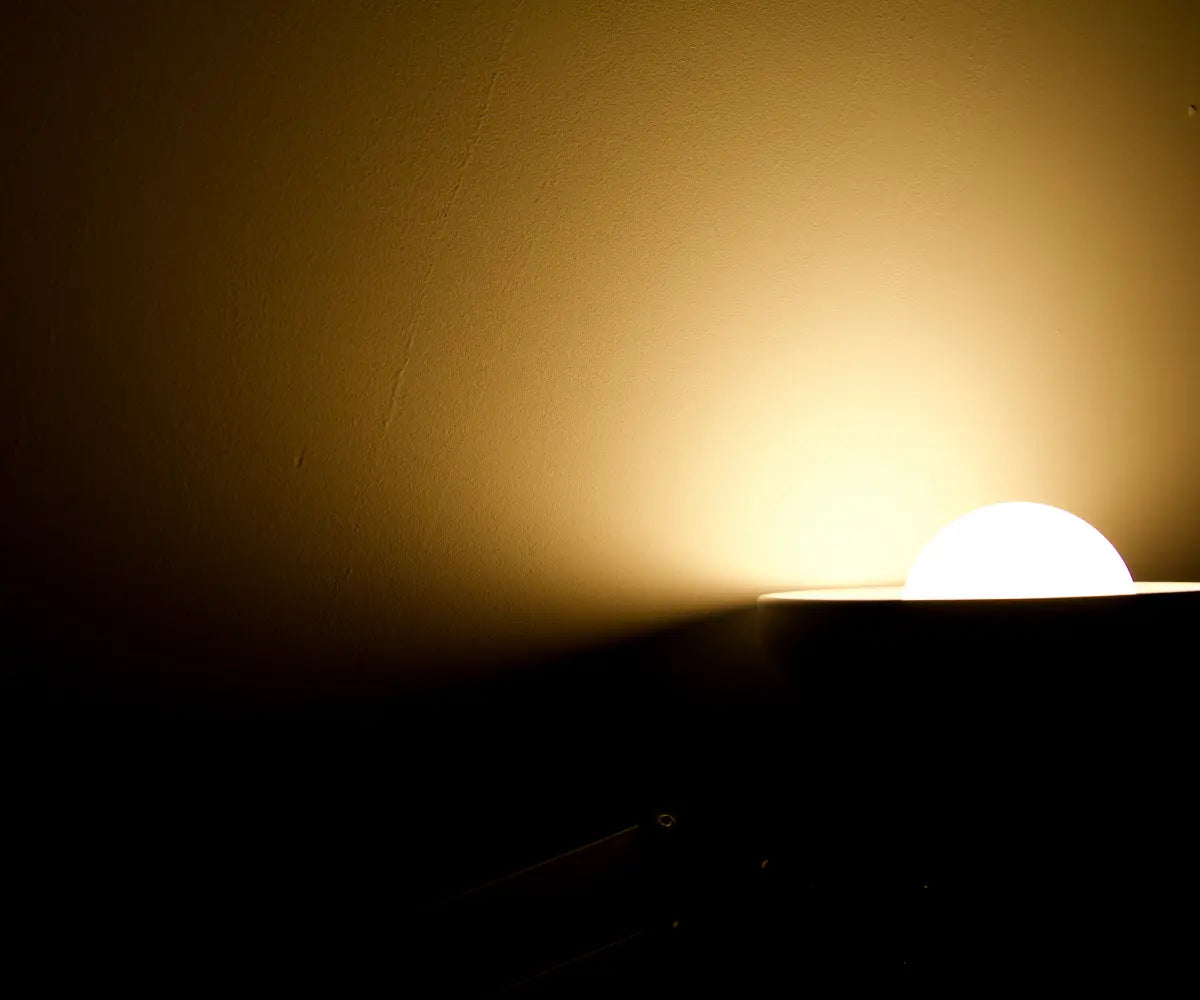In Germany, the days in January are often gray and short. Sunlight is scarce, and many people spend most of the day indoors – at work, at home, or at school. This lack of light can affect mood, sleep patterns, and even physical health. A simple solution to getting enough light even in winter is daylight lamps. They simulate natural sunlight and can help combat the winter blues. [1] .
How does a daylight lamp work?
Daylight lamps are special lamps that emit high-brightness light with a spectrum similar to that of the sun. They typically provide 10,000 lux of light, which is roughly equivalent to the light you'd get outdoors on a sunny spring day. [2] The intense light stimulates the production of serotonin in the brain, a hormone that promotes a good mood. At the same time, the light inhibits the release of melatonin, the hormone that makes you sleepy. [3] .
The health benefits of daylight lamps
Improve mood and energy
The winter blues, also known as seasonal affective disorder (SAD), affects many people during the darker months. Studies show that using a daylight lamp can significantly improve mood. Just 20 to 30 minutes of daily use can be enough to boost energy levels and alleviate depressive moods. [4] Users report increased motivation, better concentration, and an overall more positive attitude.
Especially in winter, many people often feel lacking energy and motivation.
You can find out how you can actively counteract this in this article:
Goodbye winter blues – more energy & good mood on dark days.
Regulate sleep rhythm
The lack of daylight can disrupt your circadian rhythm, also known as your internal clock. The intense light from a daylight lamp helps your body restore this rhythm. Used in the morning, the light signals your brain that it's time to wake up, making you more alert during the day and easier to fall asleep at night. [5] .
Preventing vitamin D deficiency
In winter, many people produce too little vitamin D because they hardly get any sunlight. Although daylight lamps can't directly stimulate vitamin D production, they can increase well-being and motivate you to be more active and get outside. [6] .
How do you use a daylight lamp correctly?
To fully benefit from the positive effects of a daylight lamp, it is important to use it correctly:
-
Time: The best time to use a daylight lamp is in the morning. The light signals to your body that the day has begun.
-
Duration: Use the lamp for 20 to 30 minutes per day. For example, you can turn it on while having breakfast or while working.
-
Distance: Sit about 50 to 70 cm away from the lamp. You don't have to look directly into the light, but it should reach your face.
-
Regularity: The effect is best achieved if you use the lamp daily.
Differences between daylight lamps and UVB lamps
Daylight lamps and UVB lamps are often confused, but they serve different purposes. While daylight lamps are primarily used to improve mood and sleep patterns, UVB lamps are designed to stimulate vitamin D production in the skin. Daylight lamps mimic the visible spectrum of sunlight without harmful UV radiation and are therefore safe for daily use. They promote the production of serotonin, which has a mood-enhancing effect, and inhibit melatonin production, which helps you feel more alert during the day.
UVB lamps, on the other hand, emit ultraviolet B rays that stimulate the skin to produce vitamin D. These lamps are particularly suitable for people with diagnosed vitamin D deficiency or certain skin conditions such as psoriasis. However, UVB radiation carries risks such as skin damage and an increased risk of skin cancer, so their use should be undertaken with caution.
Risks and side effects of daylight lamps
Risks and side effects of daylight lamps
Daylight lamps are generally safe to use because they do not emit UV light and therefore do not pose a danger to skin or eyes. but there are a few things to consider:
-
People with eye problems should consult their doctor before use.
-
If used for too long or incorrectly, headaches or excessive alertness may occur.
Which daylight lamp is the right one?
When buying a daylight lamp, there are a few criteria you should pay attention to:
-
Light intensity: A good daylight lamp should provide at least 10,000 lux.
-
UV protection: Make sure the lamp has a built-in UV filter to avoid skin damage.
-
Size and design: Choose a model that fits your everyday needs. There are compact lamps for desks or larger models for living rooms.
Conclusion: A ray of hope in the dark winter
Daylight lamps can be a real game-changer in the German winter. They help you combat the winter blues, boost your energy, and regulate your sleep. And the best part? It's never too late to start! Even after January has already begun, you can benefit from using a daylight lamp throughout the winter months.
